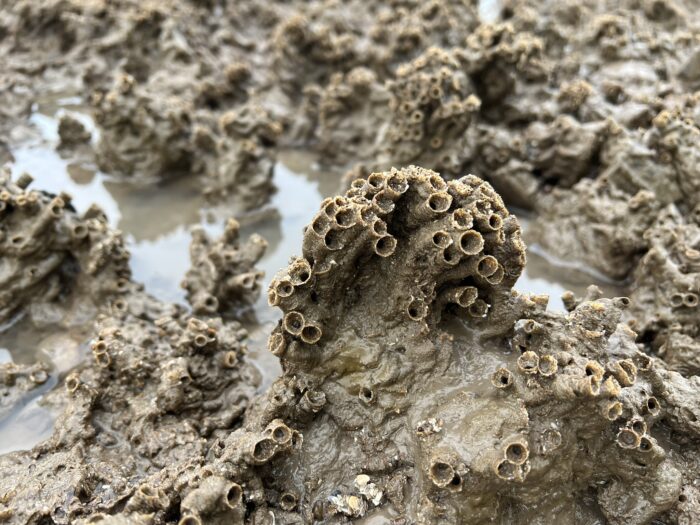It is important that Eco Marine staff are up to date on the protected species and habitats present in UK waters as well as the legislation and protection measures associated with them. A key habitat we are always aware of, and that has come up in past surveys, are Sabellaria spp. reefs. There are two species of Sabellaria spp. that inhabit UK waters:
- Sabellaria spinulosa, known as the Ross worm, is typically found in the subtidal zone.
- Sabellaria alveolata, otherwise referred to as the honeycomb worm, can be found largely in the lower intertidal zone.
Sabellaria spp. are sedentary tube-dwelling marine polychaetes. They are suspension feeders, which means they feed by extending its feather-like tentacles, called radioles, into the water column to catch plankton and detritus. By using their own mucous to combine sand and shell fragments, Sabellaria spp. build extensive rigid tube structures in which they live. These structures can eventually be extensive enough to form reef habitats, which have been found to be up to 60cm in height and 300m across.
When present in reef form, the habitat has been identified as a priority for protection under the OSPAR Convention of the Protection of the Marine Environment of the Northeast Atlantic and Annex I of the Habitats Directive as a marine habitat to be protected within Special Areas of Conservation. S. spinulosa and S. alveolata reefs are also each listed as UK Biodiversity Action Plan Priority Habitats.
A large factor in the protection of these reefs is the structure and shelter they provide which facilitates greater species diversity. By building these relatively hard and sheltered structures, Sabellaria spp. provide a habitat that allows many other associated species to become established, and so they are termed ecosystem engineers. Sabellaria spp. can act as sediment stabilisers in cobble, pebble, and gravel habitats creating a consolidated habitat for epibenthic species. Even when Sabellaria spp. has been found in low numbers the biodiversity in its proximity is vastly higher than that of the surrounding sand flat habitats. These reefs can also attract commercially important species that feed on Sabellaria spp. and other reef associated fauna.

